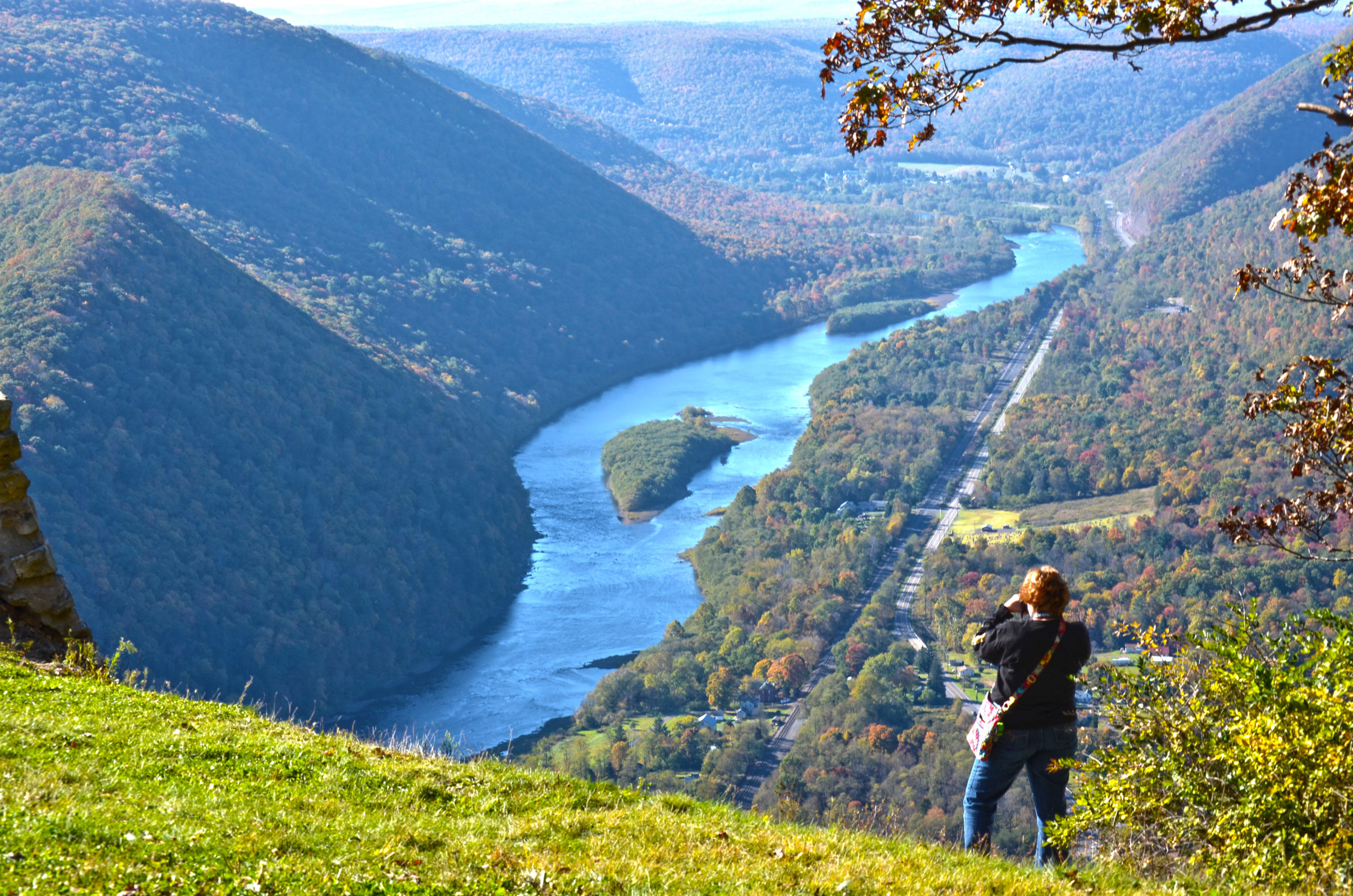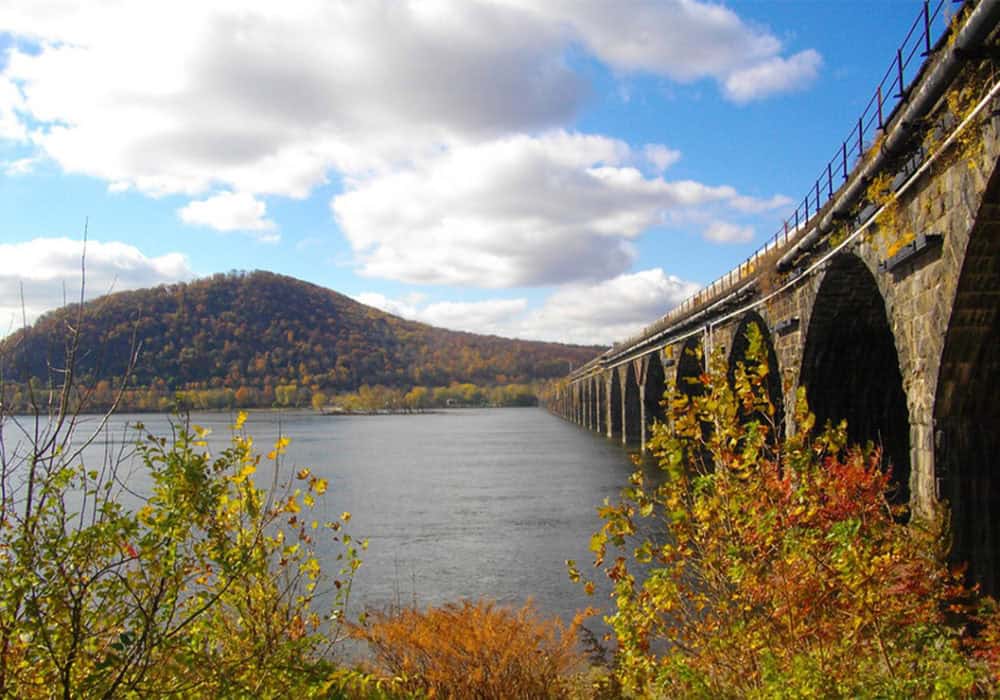As the dog days of summer fade and the season shifts to crisper cooler weather, the verdant greens of the Susquehanna Greenway also transform to the colorful spectrum of fall.
This phenomenon makes it a wonderful time of year to explore the outdoors of our region, but why do leaves changes color in autumn anyway? Why do some keep their foliage while others shed their leaves? What makes them red, orange, or yellow? How do we know if it’s going to be a colorful year?
While you’ve been unpacking those sweaters and scarves, we’ve unpacked these mysteries and more below!
 Leaves: To Drop or Not to Drop?
Leaves: To Drop or Not to Drop?
Trees can be divided into two basic categories: deciduous and evergreen. Evergreen trees keep their leaves or needles for multiple years using a waxy coating to prevent the loss of water and an antifreeze to help them resist freezing temperatures. Deciduous trees, on the other hand, loose their leaves entirely each year.
Since the leaves of deciduous broadleaf trees (oaks, maples, dogwoods, etc.) require more water and nutrients than the needles of evergreen trees (pine, spruce, and hemlock), they rid themselves of their costly-to-maintain foliage. As the days become shorter and temperatures drop, the deciduous trees adapt to the rigors of winter by shedding their leaves and reabsorbing the nutrients back into the tree to conserve its resources.
A tree is like a miniature economy, and the large leaves are too costly to maintain during the winter when resources are scarce. But before they drop, we see that wide spectrum of color.

Bright Red
Imagine you are a Sugar maple deep in the forests along the remote sections of the West Branch Susquehanna River. If the latter part of summer was unseasonably dry, the autumn sky was clear and sunny, and the nights were a chilly 40 degrees – these weather conditions will bring out your brilliant red colors. This is all thanks to a substance known as Anthocyanin, a red pigment produced in the leaves of Sugar maple trees.
In response to unfavorable weather, this pigment is produced to protect leaves as an antioxidant that repairs damage, a natural sunscreen that shields excess sunlight, and as a defense against the cold and drought. It is also thought to help provide the tree more sugar and other nutrients before the end of the growing season.

Yellow to Orange
While the Sugar maples produce brilliant red pigments, other trees such as aspen, birch, and hickory display their yellow and golden hues from the leftover materials in the leaf after the green chlorophyll (a pigment used to make nutrients) has been reabsorbed. This means the yellows come from a lack of green pigmentation that masks the yellows throughout the spring and summer.
In addition, some maples, such as the streamside Silver maple, add an eye-catching orange to create a yellow to red spectrum across the landscape. The color is caused by the leftover compound beta-carotene, the same chemical that makes carrots orange.

Smoky Gold
Although the broadleaf trees, like maples, tend to lose their leaves, while conifers (cone-bearing trees) keep their needles, there are some exceptions. Tamarack, a conifer tree species native to Pennsylvania, is known for losing its needles annually each fall. The brilliant spectacle was famously observed by 20th Century Naturalist Aldo Leopold who described the fall color of these needles as a beautiful “smoky gold.” It can be found planted in parks and yards, as well as growing wild in forests throughout the state.

Photo by Phillip Mapstone
Where and When?
The colorful trees mentioned above can be found sporting their fall colors throughout Pennsylvania, from parks and yards in suburban areas to the deeper forested areas of the state. However, the region known as the Allegheny Plateau along the upper West and upper North Branches of the Susquehanna River yields more brilliant red maple forests than anywhere else in Pennsylvania.
Within the Susquehanna Greenway, Hyner View State Park, Sproul State Forest, and Bald Eagle Mountain are ideal locations to observe those fall colors on the plateau. These thick forests create a sea of unbroken autumnal colors that will make any peeping trip worthwhile. Plus, there are several nearby Susquehanna Greenway River Towns to explore, including Renovo, Lock Haven, & Jersey Shore.
The region known as the Endless Mountains also overlaps with the plateau. Here you can see foliage amidst quaint river towns like Towanda and Tunkhannock, hop on a local trail, or visit a scenic viewpoint like the Marie Antoinette Overlook to take in the fall scenery. The pastoral valley with the Susquehanna River winding through seemingly endless mountains makes for a picturesque leaf peeper’s paradise.
For planning the best time to go, keep an eye on the weather. The persistent dry, sunny days and cool 40-degree nights will turn the Sugar maples the brilliant bright red sooner!
As you prepare for your leaf-peeping adventures, be sure to explore some of the helpful links below for more locations, maps, and photography tips for capturing those vibrant colors:


